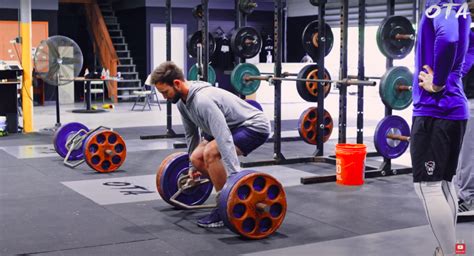Optimize workout efficiency for peak strength & rapid muscle gains?

Unlock Your Peak Potential: The Science of Efficient Workouts
Are you spending countless hours in the gym but not seeing the results you desire? The secret to peak strength and rapid muscle gains isn’t necessarily more time; it’s smarter, more efficient training. Optimizing your workouts means getting the most out of every set and rep, ensuring your efforts directly translate into tangible progress. This article will guide you through the fundamental principles to transform your training and achieve the physique and strength you’ve been working towards.

Mastering Progressive Overload: The Core of Gains
The single most important principle for both strength and muscle growth is progressive overload. Your muscles will only adapt and grow stronger if they are consistently challenged beyond their current capacity. This doesn’t just mean adding more weight every session; it encompasses various methods:
- Increase Weight: The most straightforward approach. If you can lift more, do it.
- Increase Reps: If increasing weight isn’t feasible, try to perform more repetitions with the same weight.
- Increase Sets: Adding an extra set can increase total training volume.
- Decrease Rest Times: Reducing the rest period between sets can increase intensity and muscular fatigue.
- Improve Form: Lifting the same weight with better, stricter form makes the exercise more challenging for the target muscles.
- Increase Time Under Tension: Slowing down the eccentric (lowering) phase of a lift makes the muscle work harder.
Consistently tracking your workouts is crucial for implementing progressive overload effectively. Keep a log of your weights, reps, and sets to ensure you’re always striving to do a little better than last time.
The Power of Proper Form and Mind-Muscle Connection
Lifting heavy is important, but lifting heavy with poor form is a recipe for injury and inefficient muscle stimulation. Prioritize perfect execution over ego lifting. Proper form ensures that the target muscles are doing the work, rather than relying on momentum or secondary muscles. Coupled with proper form, cultivating a strong mind-muscle connection is vital. Focus intently on contracting the muscle you’re trying to work throughout the entire range of motion. This mental engagement enhances neural drive and recruitment of muscle fibers, maximizing the effectiveness of each repetition.

Strategic Training Volume and Frequency
Finding the right balance of volume (total sets and reps) and frequency (how often you train a muscle group) is essential for efficient gains. Too little volume won’t stimulate growth; too much can lead to overtraining and hinder recovery. For most individuals looking for strength and hypertrophy, training each major muscle group 2-3 times per week with moderate to high volume per session (e.g., 10-20 working sets per muscle group per week, split across sessions) tends to be optimal. Listen to your body and adjust as needed.
Intra-Workout Efficiency: Rest Periods and Exercise Selection
Optimize your rest periods. For strength and muscle growth, generally 2-3 minutes between sets for compound movements allows for sufficient ATP replenishment, enabling you to maintain performance. For isolation exercises, shorter rest periods (60-90 seconds) can be effective. Smart exercise selection is also key. Prioritize compound movements (squats, deadlifts, bench press, overhead press, rows) as they recruit multiple muscle groups and allow for heavier loads, offering the biggest bang for your buck in terms of strength and muscle activation. Supplement with isolation exercises to address specific weaknesses or further stimulate particular muscles.

Beyond the Gym: Recovery and Nutrition
Your muscles don’t grow in the gym; they grow during recovery. Efficient workouts demand efficient recovery. Prioritize 7-9 hours of quality sleep per night, as this is when most muscle repair and growth occurs. Stress management is also crucial, as chronic stress can elevate cortisol levels, which can hinder muscle gain and fat loss.

Nutrition plays an equally vital role. To support muscle growth and recovery, ensure you’re consuming adequate protein (around 1.6-2.2g per kg of body weight), sufficient carbohydrates for energy and recovery, and healthy fats for hormonal balance. Staying well-hydrated is also paramount for optimal performance and metabolic function. Skipping on these foundational elements will severely limit the effectiveness of even the most perfectly designed workout program.

Conclusion: Train Smarter, Not Just Harder
Optimizing workout efficiency is about a holistic approach: relentlessly applying progressive overload, mastering form and mind-muscle connection, strategically managing volume and frequency, and meticulously prioritizing recovery and nutrition. By integrating these principles into your routine, you’ll not only save time but also create a powerful synergy that propels you towards peak strength and rapid, sustainable muscle gains. Stop guessing and start training with purpose – your results will speak for themselves.







